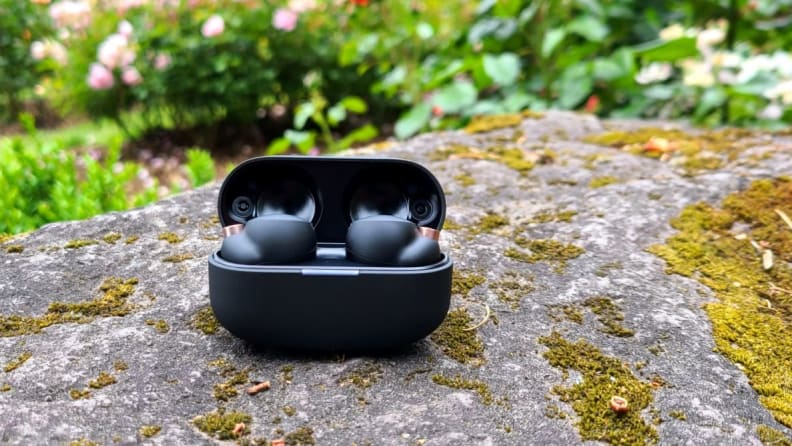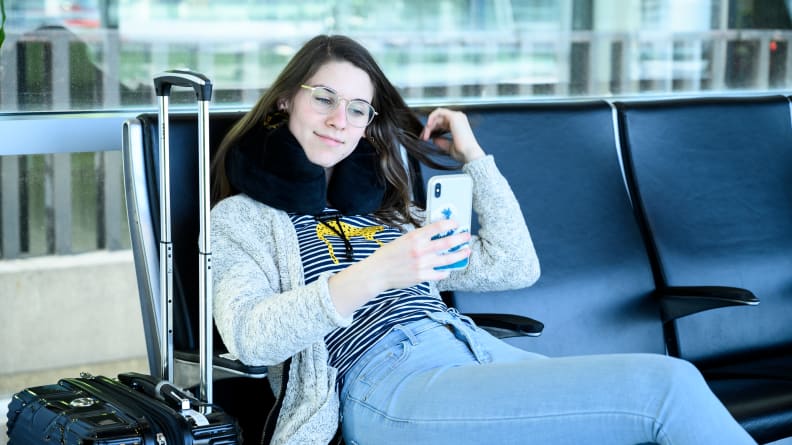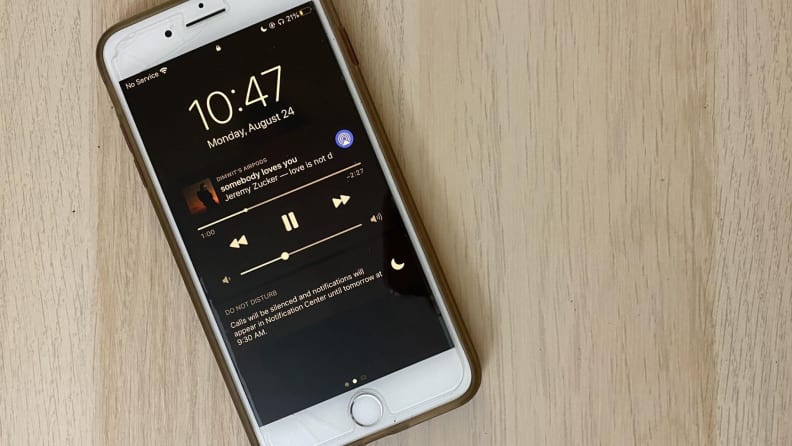Products are chosen independently by our editors. Purchases made through our links may earn us a commission.
Making the trek to spend the holidays with your family and friends can be a beautiful thing. Not quite so great? Holiday air travel. Whether you’re looking to save a few bucks or squeeze every last hour of your paid time off, a red-eye flight may end up on your itinerary. Unfortunately, trying to sleep in a cramped seat can be agonizing. If you’re among those taking a long-haul flight this holiday season, we have some pointers for how to sleep on a plane more comfortably.
1. Try to maintain your normal routine
You may already know that sticking to a nighttime routine can help you doze off faster and sleep better. So it may not be a total surprise that staying up all night and changing time zones can disrupt your internal clock.
Our bodies don’t have just one internal rhythm, according to Benjamin Smarr, a professor of bioengineering at UC San Diego who studies sleep disruption. Rather, different organs, including the stomach and liver, have their own schedules that can be thrown out of sync. To ease the transition amid jet lag, try to maintain your normal schedule during travel and after you land. For example, if you usually don’t eat an hour before bedtime, try to avoid having a midnight snack on the plane.
2. Shape your environment with noise-cancelling headphones

Pop in some earbuds or earplugs to block out the rumble of your plane’s engine.
As fans of black-out curtains may know, exposure to bright, artificial light isn’t good for sleep. Neither are loud noises. Both can be problematic on a plane when you can’t control whether your seatmates are chatting or reading with overhead lights.
"Think ahead of what you want your environment to be and try to shape that,” Smarr says. “A lot of this comes down to thinking of this as a space you have some control over and making a choice about that.”
You can make your space more comfortable by bringing items like a sleep mask and earplugs or earbuds, Smarr suggests.
Here at Reviewed, we especially like the Nidra Deep Rest Eye Mask. It fully blocks out light without putting pressure on your eyes, and in our tester’s experience it stayed on all night.
As for noise cancelling earbuds, we love the Sony WF-1000XM4. The battery life lasts up to eight hours, meaning you can listen to nonstop rain sounds or calming music for most, if not all, of your flight. You can also get earplugs at a fraction of the cost; the Hearos Xtreme held up best in our noise-blocking tests.
3. Support your head with a neck pillow

The Cabeau Neck Pillow offers the perfect amount of support in the areas you need it.
No one likes to hunch over on a tray table or smush up against a window. Pack a neck pillow to avoid having your head bob about for hours, says Dr. W. Christopher Winter, sleep specialist and neurologist.
Reviewed’s experts took a look at several travel pillows, and we’re big fans of the Cabeau Evolution Classic Travel Pillow. Adjustable straps allow you to choose how tight to make it around your neck, and its plush exterior can be unzipped and washed after your trip.
4. Dress comfortably

The Aerie Real Soft sleep shirt is one of many possibilities for a soft, but cute, outfit
Most of us dress comfortably for travel, but it’s especially important for red-eyes. Winter recommends avoiding uncomfortable clothing for a better chance to snag some zzz’s on an overnight flight.
There are a range of options for you to get snug on a plane without tight waistlines or scratchy material. Get cute and cozy with pajamas or loungewear, or step out in style with a nap dress and sweater.
Now that face masks are required on planes, it might be worth getting a comfortable mask that won’t bother you as you doze. CDC guidelines recommend that cloth masks include a nose wire and "multiple layers of tightly woven, breathable fabric." Our experts love the masks sold by Athleta for their breathability and adjustable ear loops. The masks are triple-layered and have a nose wire.
For extra protection, consider double masking. Layering a disposable mask and a reusable mask together can help cover gaps and give you a better fit, according to the CDC.
5. Avoid alcohol
While some of us kill time at the airport bar after breezing through security, you may want to skip that nightcap and opt for water during your flight’s food and drink service. “No alcohol,” Winter says. “Everyone uses it to relax, which is a big mistake. Alcohol never enriches sleep.”
Research suggests that while it may make you feel sleepy, alcohol can disrupt your slumber and prevent you from getting into a deep sleep.
Caffeine should be avoided, too, as it acts as a stimulant. Before you reach for a cup of coffee to stay alert, think twice. If you want a hot beverage for comfort, try herbal tea instead.
6. Stow your phone away

Try to put away your phone.
Most of us scroll through social media or emails until the flight attendants announce phones need to be in airplane mode. But Winter advises both putting down your phone and ignoring the in-plane movie options. “Remember, you are here to rest, not say goodbye to 007,” he says.
Fight the urge if you want to catch some sleep on a long flight. Staying away from the blue light produced by your phone will increase melatonin, a sleep hormone your body produces in response to darkness.
However, if a movie will help you veg-out and relax, go for it, Smarr says. Whatever works best for you is fair game.
7. Try to relax even if you can’t fall asleep
Winter says you don’t need to be unconscious to feel refreshed. Even if you can’t doze off, try a meditation app or practice deep breathing.
Apps like Calm and Headspace offer sleep-focused meditations as well as soundscapes to block out rogue noise. We love Headspace for its array of beginner-friendly sessions, including meditations specifically designed for sleep. So even if you're new to the practice, the app has plenty of options to choose from.
If meditating isn’t your thing, consider reading, knitting, or another soothing activity to wind down.
8. Expect that you’ll still be groggy
Even if you do your best to sleep, you’re likely to feel pretty tired when you get to your destination, Smarr says.
“One thing is to just know what is happening and be okay with it,” he says. And if you’re the one picking up the guests at the airport? “[Don’t expect] them to have full energy.”
Even as you try to establish your routine, make sure you’re listening to your body. The beauty of holiday travel, unlike business travel, is that you probably don’t have to go straight to a morning meeting, Smarr says. So don’t rush yourself. Take it easy after your flight, consider a nap the next day, and be patient even if it takes a few days for your body to get back on track.
